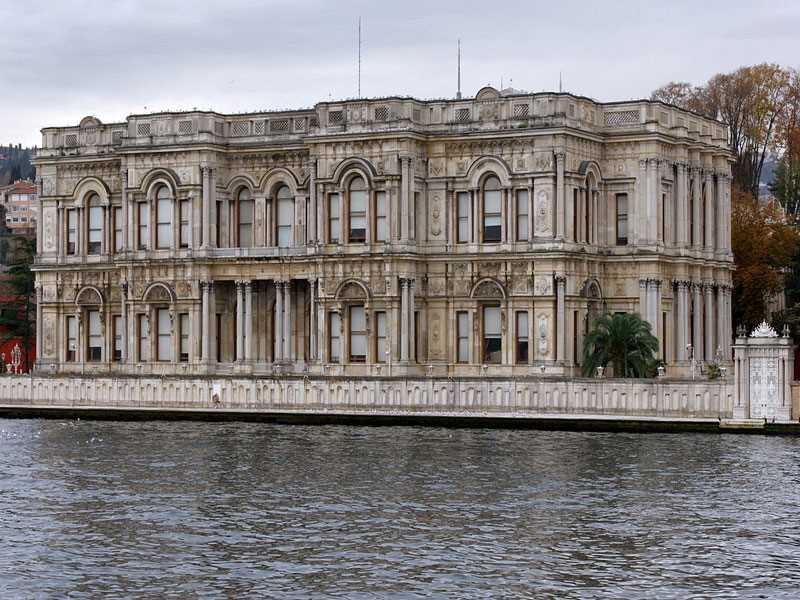Palace of Belarus, which means in master of masters, is located in the region of Uskudar in the Asian section of Istanbul.
In the second half of the 16th century, master of the reigns of Sultan Murad III, built a resort in this place. In the first quarter of the 19th century during the reign of Sultan Mahmud II, the place was annexed to the Sultan's land and a wooden cabin was built in it. The cabin was then burned and a Belairian palace, known today as the Sultan Abdul Aziz, was erected.
The palace was designed and built by the architect Sarkis Balyan in 1861 and was completed in 1865 by order of the Sultan Sultan Abdul Aziz to be the summer residence of the Sultan and to welcome the visitors.
The palace was built in the Ottoman Renaissance and Baroque and the overlap between the Eastern and Western styles. The architect Sarkis Balian built it on the seafront and consists of two main floors and a cellar containing kitchens and pantries. It is divided into two parts: the ladder (men's section) and the camel. Inside the palace there is a lounge with a pool and the Admiral's room, as well as the Sultan's room, the dining room, the reception room and the blue saloon. The palace also has 26 rooms and six lounges.
The palace garden contains trees, statues and water pools. It also contains the Marmar Kushk Marble Cabin and the Yellow Sari Kushk, which were built by Sultan Mahmood II. The yellow cabin was renovated by Sultan Abdul Aziz. The other "Kushk" or "Stable Building" is the Sultan's horses.
The Empress Eugénie, the Empress of France, visited the palace of the French Emperor Empress Eugénie on her way to Egypt to open the Suez Canal. She was impressed by her artistic and aesthetic beauty and moved the design of the windows in the guest room to adopt her style exactly in her bedroom at the Tuileries Palace in Paris.
Sultan Abdul Hamid was placed in the Palace of Belarbi after his isolation under house arrest until his death in 1918. It has been used to host Ataturk guests during the Republic. This building, which is used today as a museum, is one of the most beautiful buildings on the Asian side of Istanbul.








